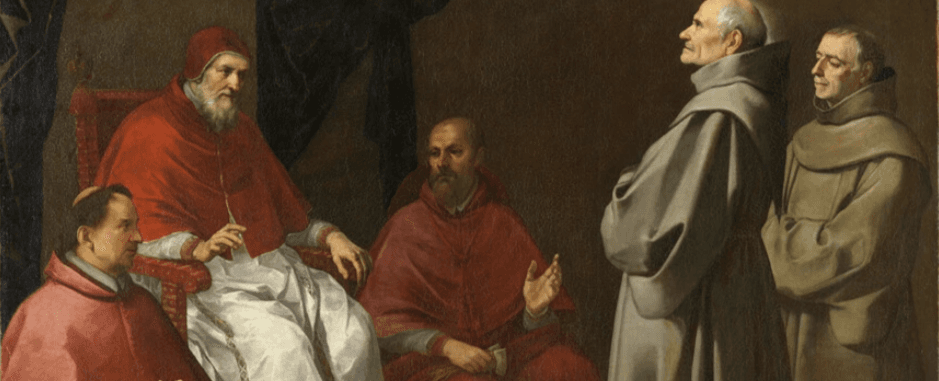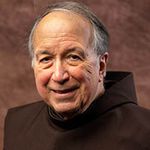Blessed Giles of Assisi: Mystic and Rebel

On April 23, the Franciscan family celebrates the memory of Blessed Giles of Assisi (c. 1190–1262), one of the first companions of St. Francis. Contemporary scholars describe him as a “mystic and a rebel.”
"The Lord has sent us a good brother"
Giles, a robust young farm laborer from the countryside of Assisi, came to the Portiuncola on the feast of St. George, April 23, 1208, asking Francis and his first two companions if they would accept him. When Francis saw Giles, he said: “Look, the Lord has sent us a good brother.” Shortly afterward, Giles accompanied Francis on his first preaching expedition and was among those who went before Pope Innocent III in 1209 to seek approval of the brothers’ way of life.
Before 1220, Giles spent much time “on the road,” often traveling as a pilgrim to various shrines, such as Santiago de Compostela, supporting himself along the way by working at odd jobs alongside other manual laborers, spreading the good news of conversion in simple words but mainly by his example. In 1219 he traveled to Tunis in North Africa to witness to the Gospel there.
Giles was especially dear to Francis, who called him “my knight of the Round Table.” As the larger Order began turning to more formal ministry in the 1220s, Giles remained committed to the way of life of the early brotherhood, spending the bulk of the day working at whatever job was available, always insuring he made time for prayer. After the death of Francis, Giles increasingly devoted himself to prayer, spending most of his time in various hermitages in the valley of Perugia. Some of this was also a form of protest against what he saw as compromises being made in the life of the Order. He was a vocal critic of the large convento built in Assisi adjacent to the tomb of St. Francis.
Gifted with mystical experiences
He spent the last decades of his life in the hermitage of Monteripido outside Perugia, where he was gifted with mystical experiences. Bonaventure, then general minister, interviewed Giles while in the process of writing the “Major Legend” of St. Francis. Giles died there on April 23, 1262. He was officially beatified in 1777 by Pope Pius VII.

Even during Giles’ lifetime, his friends were collecting his sayings, which express a pithy, homespun wisdom, similar in style to the sayings of the Desert Fathers and Mothers of early monasticism. For Giles, faith is completely down to earth and practical—a person has as much faith as he or she puts to work. Some samples:
“Sometimes we try to learn many things so as to be useful to others, but study few things helpful to ourselves.”
“He once said to a certain person who wished to get some schooling and become learned: ‘Why do you want to attend school? The sum of all knowledge is this: to fear and love God. These two things should satisfy you. A person has as much wisdom as he or she puts to good use and no more. So don’t put great emphasis on your learning. Try, with full enthusiasm, to do something productive, and then you can be confident in what you have accomplished.”
“Those called to religious life are called above all to devote themselves to prayer, humble service, and fraternal charity. Woe to those who wander away from these!”
“To the question, ‘Which is better, good preaching or good action?’, Brother Giles responded: ‘Who gets more merit: the person who makes the pilgrimage to St. James of Compostela, or the one who points out to other people the way to get there?’”
Learn more
For those who want to read the full version, the classic 1907 edition of The Golden Sayings of Blessed Brother Giles by Paschal Robinson, OFM, has been digitized and made available online.
Main image: Detail of a painting of Blessed Giles, by Bartolomé Esteban Murillo (1645). North Carolina Museum of Art, Raleigh. In this scene, Murillo is depicting Giles appearing before Pope Gregory IX and Giles, caught up in ecstasy, began to levitate (according to a legend).
Dominic Monti, OFM
Professor of Franciscan Research in the Franciscan Institute of St. Bonaventure University
Dominic V. Monti, OFM, is a Franciscan Friar of Holy Name Province (USA) and currently professor of Franciscan Research in the Franciscan Institute of St. Bonaventure University. He devoted the greater part of his ministry to teaching the History of Christianity, in particular the history of the Franciscan movement. He has contributed two volumes to the Works of St. Bonaventure series and is author of Francis & His Brothers, a popular history of the Friars Minor.

